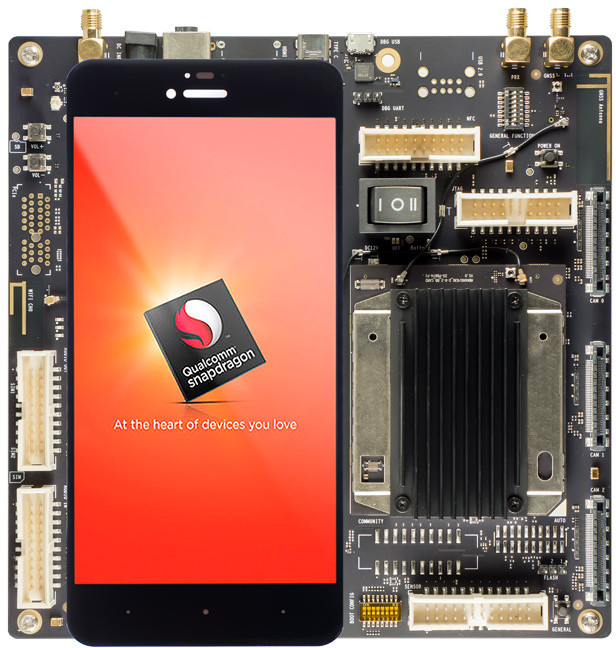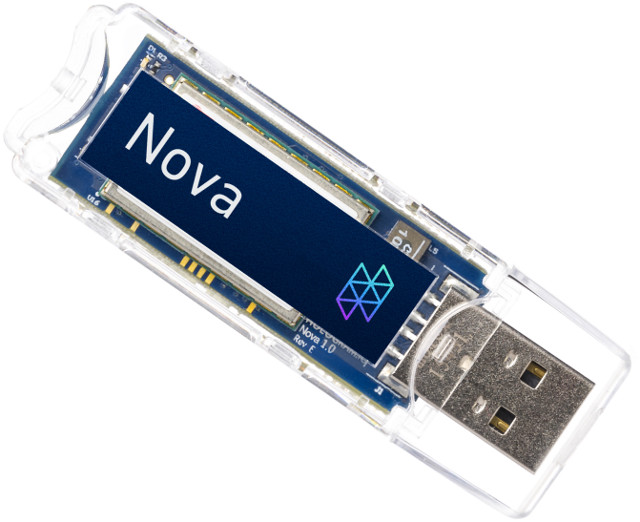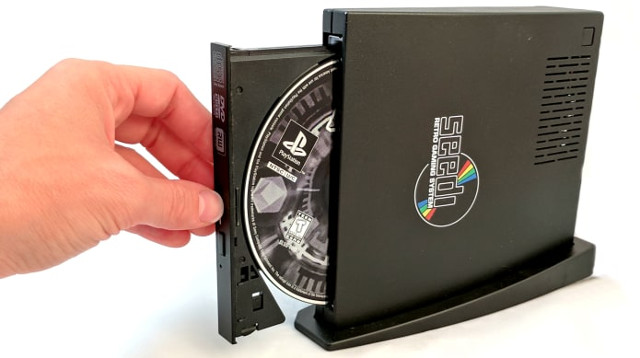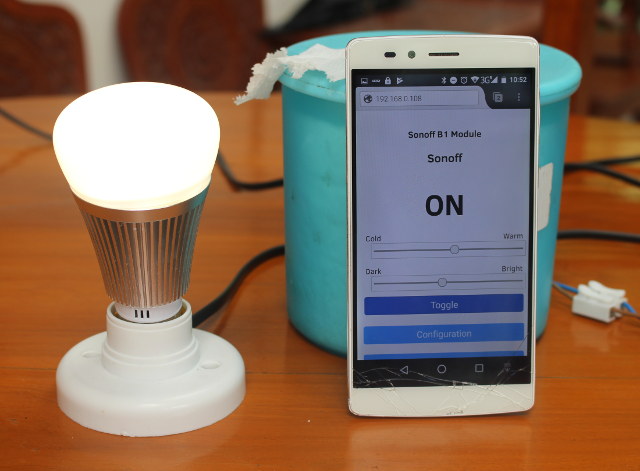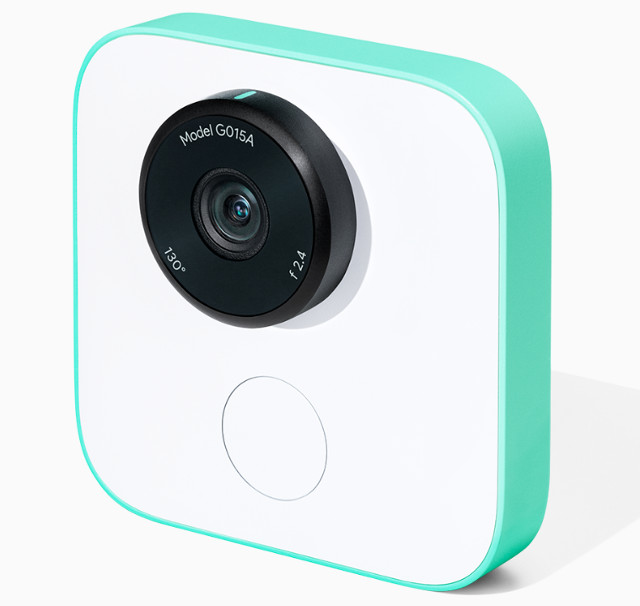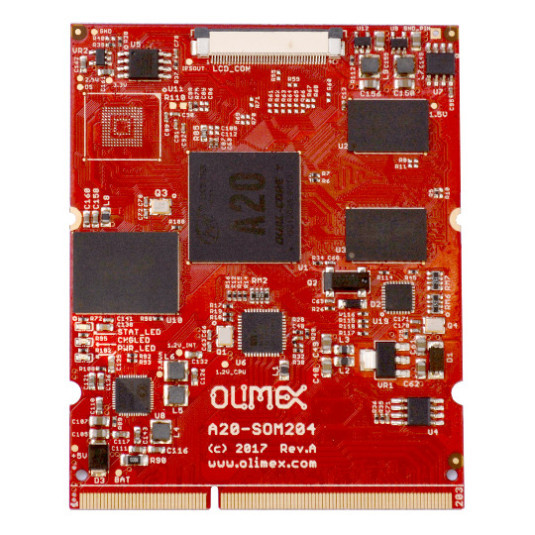For many years now, Intrinsyc has been releasing Qualcomm mobile development platforms that that are used by companies wanting to design and manufacture smartphones or other products based on Snapdragon processors. Those are usually full featured, including a smartphone display, and well suited to such product development. Their latest development kit is the Open-Q 600 HDK (Hardware Development Kit) powered by Qualcomm Snapdragon 660 SoC, an upgrade to Snapdragon 653 with about 20 percent improvement in CPU performance, and 30 percent in GPU performance. The kit is also equipped with 6GB RAM, 64GB flash, a display, wireless modules, sensors, camera interfaces, expansion headers, and more. Intrinsyc Open-Q 600 specifications: SoC – Qualcomm Snapdragon 660 octa-core processor with Four Kryo 260 performance cores @ up to 2.2GHz, four Kryo 260 low power cores @ up to 1.8GHz Adreno 512 GPU @ up to 650 MHz supporting OpenGL ES 3.0/3.2, Vulkan, DX12 FL […]
Hologram Unveils Nova 3G USB Dongle and Python SDK; 200 Raspberry Pi Zero W Kits Given Away to Developers
This summer I discovered Hologram global cellular IoT SIM card, and since they provided free developer samples with 2MB of monthly data includes, I decided to get one to try it out. I received it a few weeks later, and to my surprise it worked, despite my country of residence having some strict requirements with regards to SIM card registration. The SIM card uses roaming, but with a low fixed worldwide pricing, and does not come with a phone number by default, so maybe that’s why I did not have to register. The company is now back with Nova, an open source hardware cellular modem certified by OSHWA (ID #US000077). It’s basically 2G/3G USB dongle that’s controlled by Hologram Python SDK, specifically suited to Debian systems like Raspberry Pi 3 or BeagleBone Black. Hackster.io is also involved in the launch with a worldwide contest offering 200 free kits comprised of […]
Orange Pi Lite Based Seedi Retro Gaming Console Takes Your Old DVDs or CD-ROMs (Crowdfunding)
Shenzhen Xunlong’s Orange Pi family is a nice collection of low costs ARM Linux development boards that can be used in all sort of projects, just like Raspberry Pi boards, but cheaper at the cost of requiring more skills, and/or efforts to complete a project. One popular use for Orange Pi boards is retro gaming thanks to community supported images like RetrOrange Pi supporting games for Atari, Amiga, DreamCast, and other consoles. The implementation looks good enough for startups to sell their own products based on Orange Pi hardware and RetrOrangePi software, as we’ve already seen with RetroEngine Sigma Retro Game Console which had a very successful Indiegogo campaign with $629,368 USD raised. “Seedi Team” has now launched their own game console apparently based on Orange Pi Lite, but it’s a little different as instead of copying “ROMs” , you can simply insert your old CD-ROMs or DVDs. Seedi game […]
Review of Sonoff B1 Smart RGB Light Bulb – Part 2: Sonoff-Tasmota Firmware
I’ve already reviewed Sonoff B1 light bulb using the stock firmware combined eWelink app for Android, and as promised in the first part of the review, I’ve also tested the ESP8285 based WiFi light bulb with Sonoff-Tasmota open source firmware, and report my findings in this new post. Before we can play with the new firmware, we need to install it, and I’ve just explained how to upgrade Sonoff devices to Sonoff-Tasmota firmware either using some soldering skills and a USB to serial board, or some network configuration skills and perform an OTA update using ITEAD Studio/eWelink original firmware update mechanism. So for this part of the review, I’ll assume we have just freshly update the light bulb with Sonoff-Tasmota using the binary images released by the developer. First, you’ll need to find the IP address of the light bulb with your router or tools like nmap or arp, and […]
Google Clips is an A.I. Camera Powered by Movidius Myriad 2 VPU
Most consumer cameras offers some ways for the photographer to check the framing of the picture, such as a viewfinder or LCD display, before pressing the button. The first time I saw a consumer camera without such features was with MeCam, a tiny snap-on camera that you can wear on your shirt, and just press a button to take a picture. Convenient, but no ideal as subjects were often out of frame with the camera pointing at the wrong angle. That was in 2013. But today, those cameras can be improved with artificial intelligence, and Google Clips is a camera without viewfinder nor LCD display that can allegedly take good photos – or short clips – automatically, acting in some ways like a human photographer, so that every human in the room / the whole family can be on the shot. Google Clips specifications: Vision Processing Unit – Movidius Myriad […]
Google Adds Home Mini and Home Max to its Google Assistant Family
As we’ve just discussed in our post about Pixel 2 / Pixel 2 smartphones, Google had a hardware day yesterday, where they made announcements about various devices with new smartphones, Pixel Buds earbuds optimized for Google Assistant, Pixelbook chromebook, and so on. Google Home family has also been extended with two new models: Home Mini with a much smaller device and a lower price, as well as Home Max with premium speakers. Google Home Mini Specifications: Speaker – 360 sound with 40mm driver Microphones – “Far-field voice recognition supports hands-free use” Audio formats – HE-AAC, LC-AAC+, MP3, Vorbis, WAV (LPCM), FLAC Connectivity – Dual band 802.11 b/g/n/ac WiFi, Bluetooth USB – 1x micro USB port for power Misc – Play/Pause/Talk button, volume buttons, LEDs, microphone on/off switch Power Supply – 5V/1.8A Dimensions – 98 mm ∅ x 42 mm (h) Weight – 173 grams (device only) Home Mini is compatible with […]
Google Introduces Pixel 2 and Pixel 2 XL Smartphones running Android 8.0 on Snapdragon 835 SoC
When Google introduced Nexus brand, it aimed to provide affordable yet decently spec’d Android smartphone. The Nexus has now been deprecated, Google left the low/mid range market, leaving other fills the void, and instead launch the Pixel brand for premium devices. The company announced several new hardware devices yesterday, including two new Pixel smartphones: Pixel 2 and Pixel 2 XL, both powered by a Qualcomm Snapdragon 835 processor, and running the latest Android 8.0 Oreo. Both phones share most of the same specifications: SoC – Qualcomm Snapdragon 835 with 4x Kryo 280 “performance” cores @ 2.35GHz, 4x Kryo 280 “efficiency” cores @ 1.90GHz, Adreno 540 GPU, security module System Memory – 4GB LPDDR4x Storage – 64GB or 128GB flash Display Pixel 2 – 5.0″ always-on AMOLED display with 1920×1080 resolution (16:9 aspect ratio); 2.5D Corning Gorilla Glass 5 Pixel 2 XL – 6.0″ always-on pOLED display with 2880×1440 resolution (18:9 […]
Olimex Introduces Universal Systems-on-Module with 204-pin SO-DIMM Edge Connector
Olimex has designed several system-on-modules (SoM) over the years for on various processors such as Rockchip RK3188, TI AM3352, or Allwinner A20, and each time they focus on exposing as many pins as possible from the SoC. That’s nice for some application, but it also means SoM with different processor are not compatible, and you can’t simply design a single baseboard for all those SoMs. Olimex then realized many customers wanted an upgrade path for the SoM without having to redesigned the baseboard, and most were using the same common interfaces, so a family of compatible SoMs was needed. While there are already many system-on-module standards available, the company decided to roll their own SoM form factor based on the 204-pin SO-DIMM edge connector. The first SoM based on the standard will be A20-SOM204 powered by the popular Allwinner A20 processor. All SoM following this standard will expose the following […]


